
TRIBOLOGY LETTERS
Scope & Guideline
Advancing Tribological Knowledge for Tomorrow's Innovations
Introduction
Aims and Scopes
- Friction and Wear Mechanisms:
Research on the fundamental mechanisms of friction and wear at various scales, including atomic, molecular, and macroscopic levels. - Lubrication Technologies:
Innovations in lubrication methods, including the development of new lubricant formulations, additives, and their performance under different conditions. - Material Characterization:
Characterization of tribological properties of materials, including coatings, composites, and polymers, often using advanced techniques like molecular dynamics and atomic force microscopy. - Tribological Modeling and Simulation:
Theoretical and computational modeling approaches to predict tribological behavior, including finite element analysis and molecular dynamics simulations. - Environmental and Application-Specific Tribology:
Studies addressing tribological challenges in specific environments, such as high temperatures, humidity, and extreme pressure, focusing on practical applications in industries like automotive, aerospace, and biomedical. - Surface Engineering:
Research on surface modifications, coatings, and texturing methods to enhance tribological performance and reduce wear.
Trending and Emerging
- Nanomaterials and Nanocomposites:
There is an increasing trend in research focused on nanomaterials and their composites, particularly regarding their tribological properties and applications in enhancing lubrication and reducing wear. - Smart and Adaptive Lubricants:
Innovations in smart lubricants that respond to environmental stimuli or operational conditions are gaining traction, highlighting the need for advanced materials that adapt to varying tribological demands. - Sustainability and Eco-Friendly Tribology:
A growing emphasis on sustainable tribological solutions, including the use of biodegradable lubricants and eco-friendly materials, reflects a broader commitment to environmental responsibility. - Molecular Dynamics and Computational Tribology:
The integration of molecular dynamics simulations and advanced computational methods in tribological research is on the rise, allowing for more precise predictions and insights into friction and wear mechanisms. - Tribochemistry and Interfacial Interactions:
Research into tribochemical processes and the interactions at the molecular level is becoming increasingly important, particularly in understanding how additives and surface treatments affect tribological performance.
Declining or Waning
- Traditional Lubricants:
There has been a noticeable decline in studies focusing on conventional lubricants, as research increasingly shifts towards novel, environmentally friendly, and nanotechnology-based lubricants. - Static Friction Studies:
Research specifically targeting static friction has decreased, possibly due to a growing interest in dynamic and complex frictional behaviors in real-world applications. - Simple Experimental Methods:
The use of straightforward experimental setups in tribological investigations is waning, as researchers prefer more sophisticated and multi-faceted approaches that combine simulations and advanced characterization techniques. - Fretting Wear Research:
Studies specifically addressing fretting wear have become less frequent, as the focus has shifted towards broader wear mechanisms and their implications in various applications. - Biotribology of Natural Materials:
While biotribology remains important, the focus on traditional natural materials is declining in favor of synthetic and engineered materials that offer enhanced performance.
Similar Journals
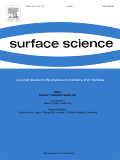
SURFACE SCIENCE
Illuminating the Science Beneath the SurfaceSURFACE SCIENCE is a prominent journal in the fields of Condensed Matter Physics, Materials Chemistry, and Surface Engineering, published by Elsevier in the Netherlands. With an ISSN of 0039-6028 and an E-ISSN of 1879-2758, the journal encompasses a wide range of research related to the physical and chemical properties of surfaces and interfaces, serving as a valuable resource for researchers, professionals, and students alike. As of 2023, it holds a Q3 ranking across multiple categories, indicating its significant contribution to its respective fields, despite room for improvement in its overall impact within the scientific community. Researchers will find that SURFACE SCIENCE provides a platform for innovative and interdisciplinary studies, making it essential for those looking to stay updated on emerging trends and technologies in surface science. While the journal is currently not open access, its reputation and robust indexing reinforce its importance in advancing scientific knowledge and fostering new discoveries.
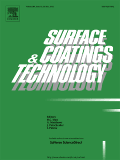
SURFACE & COATINGS TECHNOLOGY
Driving Innovation in Chemistry and Materials ScienceSURFACE & COATINGS TECHNOLOGY is a premier academic journal that has been at the forefront of research and innovation since its inception in 1986, diligently published by Elsevier Science SA. With an impressive range of studies focusing on surface and coatings technologies, the journal has established itself as a leading platform within the fields of Chemistry, Condensed Matter Physics, and Materials Science. Notably, it holds a distinguished Q1 ranking in multiple categories, showcasing its relevance and high impact in the academic community. Furthermore, it is recognized for its rigorous peer-review process and is indexed in esteemed databases, maintaining its strong position with a ranking of #17 in Surfaces, Coatings, and Films. Although the journal does not currently offer open access options, it continues to be a crucial resource for researchers, professionals, and students seeking insights into cutting-edge developments and applications in the domain of surface engineering. With a commitment to advancing knowledge across these disciplines, SURFACE & COATINGS TECHNOLOGY is an essential read for anyone interested in the latest trends and technologies shaping the industry.
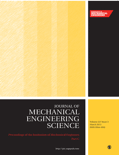
PROCEEDINGS OF THE INSTITUTION OF MECHANICAL ENGINEERS PART C-JOURNAL OF MECHANICAL ENGINEERING SCIENCE
Empowering the engineering community with pivotal research findings.PROCEEDINGS OF THE INSTITUTION OF MECHANICAL ENGINEERS PART C - JOURNAL OF MECHANICAL ENGINEERING SCIENCE, published by SAGE Publications Ltd, stands as a pivotal resource in the field of mechanical engineering, encompassing a wide array of topics from advanced materials to fluid dynamics and system design. With an impact factor reflective of its esteemed reputation, as indicated by its Q2 ranking in the Mechanical Engineering category, this journal serves as a vital forum for researchers, practitioners, and students alike. The journal boasts a rich history, converging research from 1983 to 2024, showcasing innovations and advancements that shape the mechanical engineering landscape. Although it is not an open-access publication, the insights and studies published herein provide invaluable contributions to the engineering community, fostering knowledge exchange and collaborative advancements. Researchers seeking a platform for their pioneering work will find Part C an ideal venue to disseminate their findings and engage with peers in this dynamic field.

International Journal of Surface Science and Engineering
Advancing Knowledge in Surface Science and EngineeringThe International Journal of Surface Science and Engineering, published by INDERSCIENCE ENTERPRISES LTD, serves as a vital platform for researchers and professionals in the field of mechanical engineering, surfaces, coatings, and materials science. With an ISSN of 1749-785X and an E-ISSN of 1749-7868, this journal disseminates innovative research addressing the challenges and advancements in surface technologies and engineering practices. Its scope includes, but is not limited to, surface coatings, interface properties, and novel material applications. Since its inception in 2007, the journal has established a solid reputation, achieving a Q3 ranking in Mechanical Engineering and Surfaces, Coatings and Films, and a Q4 ranking in Surfaces and Interfaces as of 2023. These metrics underscore the journal's growing influence, despite being positioned within the Q3 and Q4 quartiles of its categories. The International Journal of Surface Science and Engineering provides a curated collection of high-quality articles that contribute significantly to the understanding of surface phenomena, fostering collaboration and advancements in the field. Researchers, professionals, and students alike will find this journal an indispensable resource for cutting-edge developments and in-depth analyses.

Tribology International
Unlocking the Secrets of Surfaces and Coatings.Tribology International, published by ELSEVIER SCI LTD, stands as a premier journal in the fields of tribology, mechanical engineering, and material science. With an impressive impact factor and ranking in the Q1 category across multiple disciplines such as Mechanical Engineering and Surfaces, Coatings and Films, this journal serves as a critical resource for researchers, professionals, and students looking to advance their knowledge and application of tribological principles. Established in 1972, Tribology International explores a wide array of topics, including friction, wear, and lubrication, making it indispensable for those dedicated to innovation in engineering and materials sciences. With its rigorous peer-review process and high visibility within the academic community, Tribology International is pivotal in disseminating influential research, fostering new ideas, and shaping the future of tribological research.
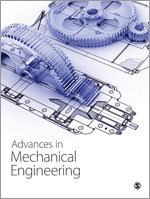
Advances in Mechanical Engineering
Transforming Theoretical Insights into Practical SolutionsAdvances in Mechanical Engineering is a premier open-access journal published by SAGE Publications Ltd, dedicated to the advancement of theoretical and applied research in the field of mechanical engineering. With an ISSN of 1687-8132 and an E-ISSN of 1687-8140, this journal has been a vital resource for scholars and practitioners since its inception in 2009. Housed in the United States, it operates under a commitment to ensure free and immediate access to its high-quality content, enhancing collaboration and innovation across the global engineering community. With a noteworthy Q2 ranking in the mechanical engineering category and a solid Scopus rank placing it in the 59th percentile, the journal serves as an influential platform for cutting-edge research, theoretical advancements, and comprehensive reviews. As the field evolves, Advances in Mechanical Engineering continues to cater to the rigorous needs of researchers, professionals, and students, striving to transform knowledge into tangible engineering solutions. This journal's commitment to excellence makes it a significant contributor to the mechanical engineering field, encouraging dynamic discussions and implications for the future.
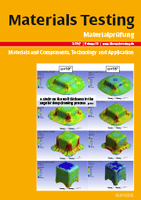
Materials Testing
Pioneering Innovations in Material PerformanceMaterials Testing is a renowned journal published by Walter de Gruyter GmbH, serving the global scientific community in the fields of Materials Science, Mechanical Engineering, and Mechanics of Materials. With an ISSN of 0025-5300 and an E-ISSN of 2195-8572, this journal has been a significant contributor to the discourse on material performance, testing methodologies, and engineering innovations since its inception. The journal is recognized for its rigorous peer-review process and holds a commendable Q2 quartile ranking in multiple categories for 2023, showcasing its impact and relevance in the field. With open access options available, Materials Testing aims to disseminate valuable research findings and practical insights that drive advancements in technology and materials applications. By addressing the latest challenges and developments within the field, this publication serves as an essential resource for researchers, professionals, and students alike, fostering a deeper understanding of material properties and testing techniques.
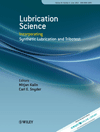
Lubrication Science
Pioneering research in lubrication and materials innovation.Lubrication Science is a premier journal dedicated to advancing the field of tribology, focusing on the study and application of lubricants, lubrication methods, and their impacts in materials science. Published by WILEY, this journal serves as a critical platform for researchers and industry professionals alike, providing innovative insights and findings since its inception in 1988. With an ISSN of 0954-0075 and E-ISSN 1557-6833, the journal has established a commendable reputation in the academic community, holding a Q2 ranking in Materials Chemistry and a Q3 ranking in Surfaces, Coatings and Films as of 2023. Despite its recent emergence as a competitive publication, evidenced by its 47th percentile rankings in both subfields, Lubrication Science continuously seeks to bridge gaps in knowledge and foster collaboration among researchers. Its commitment to quality research is reflected in its detailed reviews and timely publication of original research articles. Although not an open-access journal, it remains an essential resource for anyone looking to keep abreast of the latest advancements and applications in lubrication technology, making significant contributions to sustainability and innovation in materials science.
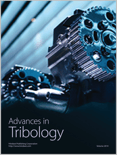
Advances in Tribology
Pioneering Research in Tribological ScienceAdvances in Tribology is a premier open access journal published by HINDAWI LTD, focused on the rapidly evolving fields of tribology, mechanical engineering, and materials science. Since its inception in 2008, the journal has provided a crucial platform for researchers, professionals, and students to disseminate knowledge and advancements in the understanding of friction, wear, and lubrication phenomena. With an impact factor reflective of its significance, Advances in Tribology is ranked in the Q3 category for both Mechanical Engineering and Surfaces, Coatings, and Films as of 2023, situating it among the prominent journals in its field. The journal's commitment to high-quality research is evident in its rigorous peer-review process and its dedication to fostering open access, allowing for widespread dissemination of impactful research. Published in Egypt with global reach, this journal aims to bridge the knowledge gap in tribological applications and innovations, serving as a key resource for those engaged in the study and application of surface interactions.

Friction
Exploring the Frontiers of Mechanical Engineering ExcellenceFriction is a renowned peer-reviewed open-access journal published by TSINGHUA UNIVERSITY PRESS, dedicated to the intricate field of Mechanical Engineering and the specialized areas of Surfaces, Coatings, and Films. Since its inception in 2013, the journal has rapidly ascended to prominence, achieving Q1 rankings in both categories as of 2023, thereby securing its place as a leading resource for researchers and professionals alike. With its impressive Scopus rankings—26th out of 672 in Mechanical Engineering and 10th out of 132 in Materials Science—the journal exemplifies outstanding academic rigor and contribution to its field. As part of its commitment to accessibility, Friction offers open access to all published articles, ensuring that groundbreaking research is freely available to scholars and practitioners worldwide. By bridging theoretical insights with practical applications, the journal aims to foster innovation and collaboration within the engineering community and beyond.